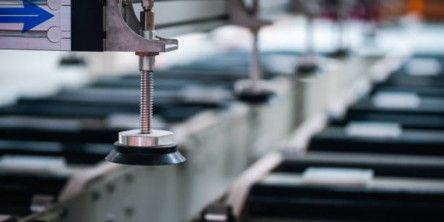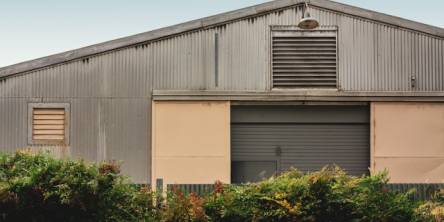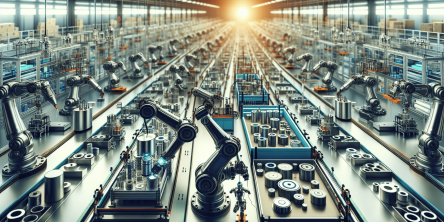3D Printing and It's Contribution to Prototyping Process

Prototyping is the creation of a preliminary model or sample, enabling to test and evaluate it pre-production, making the necessary modifications. Many companies nowadays are turning to 3D printing, also known as additive manufacturing, which is a great solution for producing the prototype. Parts are created directly from a design file the process saves time and money. In recent years 3D printers have become faster, easier to use and handle multiple materials at the same time, thus considered the future of product design and manufacturing.
Producing any product can be a long, complex and expensive process involving lots of trials and errors. The process includes designing, drawing, testing, changing, correcting, redesigning etc. A lot of work has to go into perfecting any part before mass producing it. This is where prototyping can contribute a great deal. By fabricating, machining or producing a prototype one can create a preliminary model, test and evaluate it and make the necessary changes and modifications to it, all prior to launching production. Prototyping is critical for verification of the product design and its assembly.
The prototyping process allows for the discovery of errors in early stages, so that redesign can take place in order to perfect the product. It brings efficiency to the process and saves companies a great deal of time and budget, especially in cases where rigid timeline or limited budget are involved.
Many companies nowadays are turning to 3D printing which is a great solution for producing the prototype, especially in instances where the prototyping model needs to be very precise or customized to accurate details. 3D printing technology, also known as additive manufacturing, has become more and more popular in recent years. The parts built in the 3D printer are created directly from the design file. This means that you can avoid time and cost of tooling, and also able to change the designs digitally and create updated prototypes in less time, helping move to the production and manufacturing process faster. In addition, the 3D printer can use multiple materials at the same time to produce the prototype.
When creating the part with the 3D printer you can actually see the model or prototype, touch and inspect it. What you have in your hands is a physical sample of your end-product. You can create it from same or similar materials to the finished product. You then also have the ability to test your product under demanding requirements and conditions, such as withstanding wind, heat, water, coatings, paints etc. The testing phase is crucial, so that you can make the necessary tweaking and improvements of the product as needed, ensuring that what you have is a quality product. You cannot do that if all you have is a CAD design on your computer, and it is hard to visualize it even if you are using 3D files.
In recent years 3D printers have become faster, easier to use and handle multiple materials at the same time, thus more popular. They can be used to create prototypes in endless types of industries, including industrial manufacturing, automotive, aerospace, defense, pharmaceutical, medical, dental and health care, sports, art, architecture, hobby models, consumer goods and electronics and many more. Not only 3D printing is financially and time-wise beneficial, but its production process introduces a more ecological way of creating the product – Not a lot of scrap material which needs to be recycled is involved. In fact, the future of product development and manufacturing now lies in the hands of those revolutionized high-technology printers.
3D printing can also be used for foam prototypes. Companies can build their foam prototypes in a traditional way or in a modern way. The traditional venue includes pouring two-part urethane liquids into hard tools or cutting existing blanks of foam into a specific shape. While these methods can produce foam prototypes, they can be time consuming and aren’t particularly cost-effective in low volumes. The other venue would be pairing foam with prototyping (additive manufacturing). Instead of injecting foam into hard metal or silicone tools, you can build alternative tooling with durable thermoplastics like ABS. This method will eliminate hard tooling costs, improve production time, enable creating complex designs, allow us to find customized foam solution.
Similar Articles
CNC Machining has emerged as a vital technique in the current production process, as it provides an efficient and accurate means of manufacturing items with complex geometries. This technology is applied across aerospace, automobile, and medical devices manufacturing fields, and various other industries.
Find out what to look for in a reliable CNC machining manufacturer, from quality assurance and advanced technology to customer service, for efficient project success.
Save on pipe relining costs with smart planning. Learn how to reduce expenses through targeted repairs, material choices, off-peak scheduling, and competitive bids.
When it comes to metalworking, the quality of your equipment can make a significant difference in the efficiency and accuracy of your projects. Among the essential tools in any metalworking shop is the sheet metal brake, which plays a crucial role in bending and shaping metal sheets
Discover the latest design trends and innovations in metal table legs, enhancing style and functionality for modern interiors.
In the dynamic nature of the industrial sector, high-efficiency gate valves play a crucial role in the flow control system. Leading valve suppliers and globe valve suppliers are always engaged in the development of this technology to enhance the efficiency of the equipment.
When it comes to constructing a metal building, whether it's for industrial, commercial, or residential use, choosing the right metal building company is crucial. Metal buildings offer durability, flexibility, and efficiency, but only if they are designed and constructed correctly.
Discover how ERP systems streamline procurement in manufacturing, enhancing efficiency, reducing costs, and improving supplier management.
In today's fast-paced manufacturing landscape, the use of high-quality bonding solutions, such as industrial adhesives, has become increasingly crucial to ensure product quality, efficiency and competitiveness.









